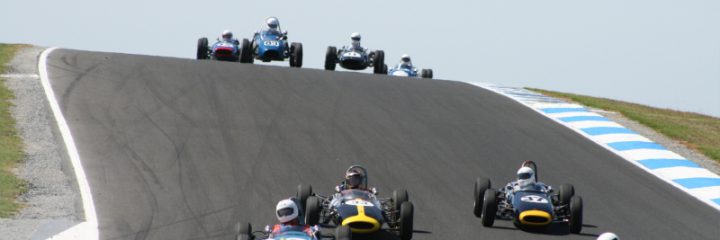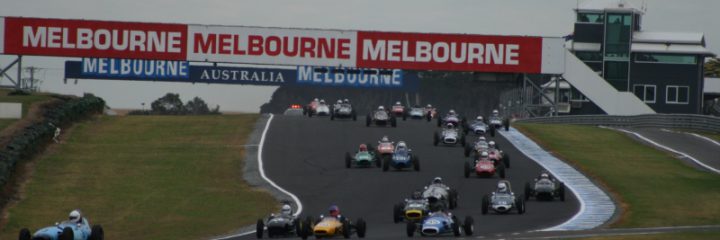Building an Anglia Race Engine

by Noel Tuckey
1. BUILDING AN 85BHP 105E ANGLIA RACE ENGINE
THE 1098cc BLOCK.
Sourcing good internally rust free blocks is becoming difficult, although Coltec in the UK has stocks of used scale free castings. We use the thicker walled Australian 109E blocks, and usually bore one in three successfully to 85mm. For an 85bhp, 8,500rpm engine, the centre main bearing cap has to be either reinforced with a steel cross bar and spacers, or changed for a full steel cap to stop breakage of the original cast iron cap. Line bore the main bearing, tunnels, and fit only copper lead or lead indium bearing shells. Alloy tin shells can be used, although these will need to be changed every 500 competition kilometres. There is a full length main oil gallery running the length of the block on the distributor side, and we have found that a one-sixteenth bleed hole drilled into this gallery inside the block, aimed directly at the skew gear camshaft drive to the conventional oil pump and distributor gears, saves the otherwise poorly lubricated cam gear from destroying teeth. Cam followers are also a short life problem with high valve spring loadings, and we renew these every second 1,000km rebuild. to avoid foot breakage and the break-up of the follower face which will quickly take out any work toughened, iron camshaft lobe.
THE GLASS BALL CRANKSHAFT
Ford’s stock four bolt crank is safe, if balanced to a constant 8,500rpm ceiling. Mated to stock 105E rods, with the original five-sixteenth rod bolts replaced with three-eighth 90 ton cap screws, and fitted with top quality lightweight pistons, this combination will survive for at least five seasons, if oil surge doesn’t get the number three conrod bearing first. With competition clutches, the white metal lined half circle crankshaft thrust bearings have to he replaced by copper faced thrusts, as supplied by Vandervell. Otherwise, on an 8,500rpm start off the line, the stock white metal stuff will melt and take out your crank. Never fit a cast iron flywheel or a cast iron drive disc clutch. as these tend to break and go out through the bell housing. The stock Ford 105E crank pulley will also split, and the pressed metal water pump pulley will elongate the securing bolt holes. We use a one to one narrow tooth belt drive from crank to water pump, and don’t have problems. Burton Power in England can supply these. Burton’s also stock a hi-volume oil pump to replace the Ford original, and fit a steel canister filter. A duplex camshaft drive chain and sprocket set is essential, and Rollmaster in Queensland make these. Conrod bearing shells must also be copper lead or lead indium with at least .002″joumal clearance, and .010″ conrod side clearance to the crankshaft cheeks. Main bearing clearances should be minimum .0015″journal, .008″ thrusts.
PISTONS.
A cheap and easy substitute for the no longer manufactured 85mm Hepolite pistons is the 83mm. VW 1500 part. I have fitted these pistons to full race engines and found them effective and reliable, although the conrod end requires re-bushing to fit the larger pin. Otherwise, Mahle forgings will have to be machined to fit, or Ross finished pistons can be sourced from the US of A. We deck the block face so that the piston crowns are fully flush at TDC, and rely on the excellent composition head gaskets from Twincam Services (03 9786 4711) for block to cylinder head clearance.
CAMSHAFTS.
The Cosworth A6 profile works well in this engine, although the A8 with wider lobe centres apparently provides a flatter torque curve. The original 105E camshafts are too small in diameter between cam lobes to prevent camshaft flex at high rpm’s, and a reground cam that has been turned smaller between lobes is even worse. Best camshaft to use is the part from Ford’s later model Escorts and Capri’s, which start with larger lobes and is at least 10% thicker in shaft size. Reground shafts are okay, if run in for 20 minutes at 4,000rpm on inner valve springs only. Firing up an engine with a new and soft camshaft on full valve spring loads will only rip off at least one lobe, in all of half an hour’s running.
CYLINDER HEAD.
Only work with a minimum rust, 105E casting, which has the smallest combustion chamber shape. Do not fit inlet valves exceeding 1.4375″ in diameter, or 1.250″ exhausts, although there is plenty of spare space in the combustion chamber. If you go any larger than this, despite what your flow bench tells you, you will simply loose horsepower. Stock Cortina GT valves are the right size and made of austenitic steel (non magnetic), although they do need lightening and polishing. Ports can be machined out to 1.15625″ and combustion chambers work best in the kidney shape, taken right out beside the valves and scalloped to meet the fire rings of an 85mm head gasket. With the potential phasing out of leaded 100 octane, hard steel exhaust seat inserts are a sensible move, and a compression ratio of 10.5 to one will help with the horsepower. Do not fit valve guide inserts or valve stem seals, as without enough oil in a close fitting guide, the valve stems will seize and take out a piston. Better to bore the head and fit bronze valve guides. To achieve a high compression ratio with a very open combustion chamber, aiming for maximum flow clearance between the valve heads and combustion chamber walls, the head face has to be drastically machined to where the machining will break into the spark plug holes, and bring the boomerang shaped plug boss cooling passage very close to the fire ring clamping position of the head gasket. Most times, this boomerang passage has to be almost welded shut and new coolant passage holes drilled, while the shortened spark plug hole will demand the fitting of Bosch W3AS or NGK B9HVX half inch reach plugs. Five coil valve springs that accommodate up to a full half inch of valve lift can be obtained from Iskendarian, part number VWE005/SP-116, although these are only 1.062″ in diameter and suffer quickly from high rpm fatigue. I prefer to fit the larger diameter Holbay designed “Rocket” springs, which are now newly available from Colter (01473 738 738) in the UK. Along with lightweight valve caps and hard steel spring seats that save chopped up cast iron going through the engine, and these springs will stay bounce free up to 10,500rpm if set to 33mm assembled height, or 120lbs seated. Steel rocker posts with a thick wall shaft and three eighth 90 ton cap screws replacing the original five sixteenth bolts are a must, although the stock rocker arms with steel tube spacers are okay if checked often for seizure marks in the bores. Cut down Corolla K3 pushrods are lighter and stiffer than the Ford originals, although they may need extra clearance in the head holes. As the rocker box fills up with oil at high rpm’s, either reduce oil flow up to the rockers or fit dual drain tubes to dump waste oil back into the crankcase. The stock distributor will work with the 85bhp engine, if a 10 degree cam is ground to the FVA profile and a Bosch Mini Cooper S contact set is fitted. Ignition timing is best around 33 to 35 crankshaft degrees, although these engines will soak up a lot of total ignition advance without adverse effect.
2. BUILDING A 120BHP, 10,500RPM 105E ENGINE.
Use a 109E block fitted with three line bored steel main bearing caps, and either a duplex chain drive or a Cosworth gear set to spin up the heavy duty cast iron billet camshaft. We fit the Holbay 658 profile shaft, which has a.460″ valve lift and power from 4400rpm to 9,800rpm, although other grinds are available from the UK. This engine will require a custom machined steel crankshaft, with longer conrods of 4.9″ centres (1600 Cortina rods will work on an Australian “Crankshaft Rebuilders” steel crankshaft), and 85mm, two ring, 1.208 compression height Cosworth or Ross forged pistons. The pins in these pistons are deliberately oversized and we have found the best rings to fit are the Gapless segments from America. Given the extremely short stroke of these engines, ring sealing is critical. The cylinder head is as described for the 85bhp engine, although 9/32″ stem diameter valves should be fitted to bronze guides in 1.160″ ports and steel or titanium caps are available from Coltec. “Rocket” springs are ideal, and a lift to a 13 to one compression ratio is achievable. A Titan roller rocker set can be bought through Burton Power, and chrome-moly pushrods are available from the US of A. Dry sumping the engine is preferable, although a bullet proof wet sump can be manufactured with the right information; the dry sump system with scavenge and pressure pumps ideally timing case mounted and driven off the camshaft nose. Ignition Developments manufacture a Bosch based racing-distributor which really works well, and these high rpm engines require a full rebuild after every 1,000 competition kilometres.





